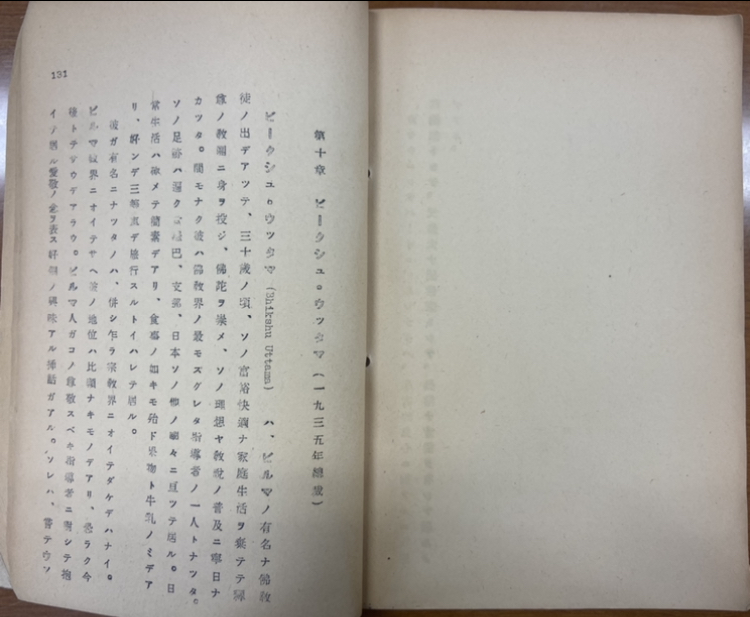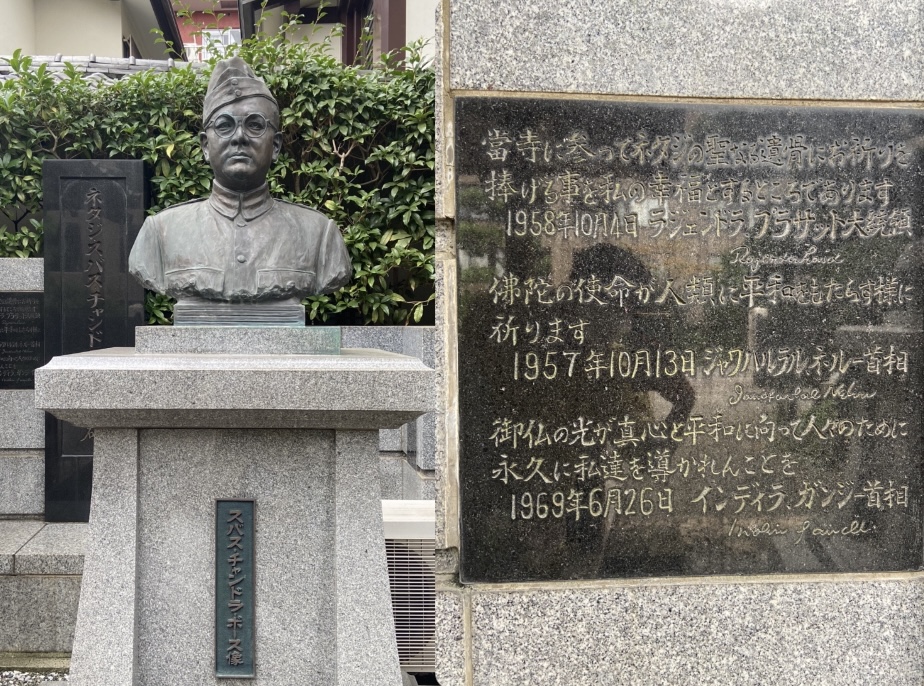Can tourism be a sustainable livelihood diversification option? A case study in South Omo Zone, Ethiopia
Research Background South Omo Zone (SOZ) is located in the Lower Omo Valley, southwest of Ethiopia. Its people are …

Photo 1: Japanese document on ‘Hindu Mahasabhas’ and a chapter on U Ottama
U Ottama (1879-1930) was a Buddhist monk who was a forerunner of a Burmese nationalist movement. He traveled throughout the world, and extensively in Asia where he both studied and taught. He denounced colonial rule and was strongly influenced by the Indian Independence Struggle and Japanese model (Motadel 2014:290)[1] .
His first-hand experience to the nationalism was while he was studying in Calcutta, where he was introduced to ideas of non-violence and boycott movement. In 1935, he was elected to become head of Hindu Mahasabhas, which was a split of the influential Indian National Congress. Much of his political ambitions were taken after the ideology of the Indian Independence struggle where he urged the Burmese people for non-cooperation and boycott of the British goods. For this reason, he was imprisoned by the British for sedition act for the first time in history for political speech, made against the British Empire.
The next model he sought after for his political ambitions was that of Japan.After the victory of Japan in the Russo-Japanese War of 1904-1905, U Ottama was intrigued by how “small” Asians had defeated “the bigger and stronger” Europeans when the European Empires were vast and dominant, occupying large areas of Asian continent and putting former Asian empires under their control. He repeatedly visited or stayed in Japan, and even brought Burmese students to study in Japan. His pro-Japan stance was evident in his writings about Japan where he praised industrialization, modernization and militarism taking place in Japan. His stance even led to controversial accusation against China as a war-monger in his book ‘China and Japan’, published in 1938.
In this research, the role of ‘Pan-Asianism’ on U Ottawa’s political ambitions was to be studied. First-hand experiences of living in both India and Japan had pushed forward U Ottama to engage in anti-colonial activism and to spread nationalist ideology among the common Burmese people. However, how the ‘Pan-Asianism’ of both India and Japan had impacted on U Ottama’s political activism is under-studied, and the aim of this research is to further explore this research gap.
[1] Motadel, D. (2014) Islam and the European Empires. Oxford University Press.
The research trip to the National Diet Library, Diplomatic Archives of the Ministry of Foreign Affairs(Japan), and Renkoji temple is primarily to do an archival research on political monk, U Ottama, and his political ambitions in relations to India and Japan, especially in an attempt to understand the role of ‘Pan-Asianism’. It is to explore how Indians and Burmeses perceived Japanese Empire at that time, and how Japan perceived others, Asia, while supporting both Indian and Burmese nationalist movements.

Photo 2: Statue of Subhas Chandra Bose at Renkoji and wishes of leaders of Independent India who paid visits
Archival research was conducted in three locations, They are at the National Diet Library located in Tokyo,Chiyoda-City, Nagatacho, 1 Chome-10-1, and at the Diplomatic Archives of the Ministry of Foreign Affairs (Japan) located in Tokyo, Minato-City, Azabudai, 5-3, 1-Chome, and Renkoji temple located in Tokyo, Suginami-City, Wada, 3 Chome-30-20. The research was conducted between September 11 to September 17. On the first day of the arrival from Kyoto to Tokyo, a visit to Renkoji temple was made to visit the burial site of Subhas Chandra Bose, who was the leader of the Indian National Army (INA) and collaborated with the Imperial Japan to set India free from the British Raj. His ashes were preserved in this temple ground and a statue was built in honor of his sacrifice for the motherland. It was visited by some influential leaders of independent India such as Jawaharlal Nehru in 1957, Rajendra Prasad in 1958, and Indira Gandhi in 1969. There, one can witness historic connections between Japan and India.
Next, some important sources were found in both National Diet Library and in Diplomatic Archives of the Ministry of Foreign Affairs(Japan). As required by the Diplomatic Archives of the Ministry of Foreign Affairs, the reservation and the request of the documents were made before the visit. Newspaper articles on Japan written by Indian nationalists and exchanges of both India-Japan, and Burma-Japan were studied. For instance, in the Bombay Chronicle of April 1935, the first Indian scholar who had graduated from a government university in Japan was recorded. In March 1939, the news of some 150 Burmese students to study in Japanese schools was recorded. In this way, one can understand the exchanges between Japan and British India, and between British Burma under the sphere of the Japanese ‘Asianism’. Some praises about Japan, and how India should emulate Japan were also part of the records in the newspaper archives.Moreover, an important Japanese document compiled the history of Hindu Mahasabhas in which U Ottama was recognized as ‘Bhikshu Uttama’ belonging to the association was recorded in the chapter 10. This will provide understandings on the perceptions of the Imperial Japan towards the nationalist association and the role of U Ottama in the movement, and even the intentions behind the volume.
The last research site was the National Diet Library. Japanese sources written about both U Ottama and Japanese Asiansism before the Second World War were only available at the site, being closed to public access online. Here, many important documents written on U Ottama were collected. For example, there was a short essay on U Ottama in the book ,’Sen-I Fuukei’ 船醫風景(船医風景),which the ship doctor’s onboard essays were compiled and published in 1930. Many short articles were also in ‘New Asia’ Shin-Ajia (新亜細亜) collections and ‘Emergency in Asia’(興亜). Another important finding was a pictorial book written in Katakana from the first edition of the Great Japan Oratorical Society published in 1942, “ウ・オッタマ(ビルマ独立の父)初版 大日本雄弁会講談社 昭和18年”. All of these findings were only available at the research site, and are very important to the understandings of U Ottawa’s political activism, and how Japan played a role in it.
For further research, I want to conduct more archival research in Kansai-Kan of the National Diet Library; Ryukoku University and Higashi Hongangji temple where U Ottama stayed and taught and Aichi University to search for articles U Ottama contributed to Thuriya (the Sun) newspaper on microfilm.
Copyright © 附属次世代型アジア・アフリカ教育研究センター All Rights Reserved.